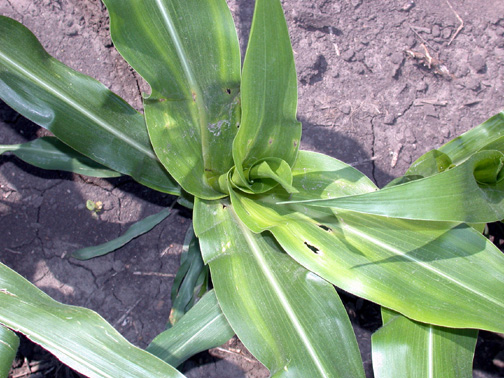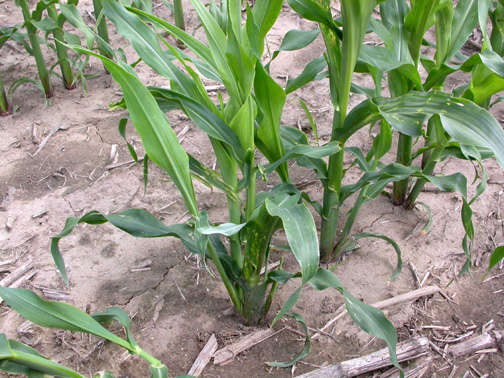Reports from those checking fields indicate that brown stink bugs were busy this spring feeding on seedling corn. Perhaps now that plants are greening up, and getting some height, the damaged plants with yellow striping are becoming obvious. What seems to favor the development of the worst stink bug problems is where corn was planted into soils not suitable for good seed-slot closure. Not that we had any of that this spring!
Stink bugs feed on corn by inserting their straw-like beak into the stalk or whorled-leaves while injecting an enzyme, which helps digest plant tissue. They prefer to feed on new growth. When seed slots are not properly closed during planting, stink bugs often feed on, or near, the growing point. It is important to remember that seedling corn plants are most vulnerable to attack and damage. By the time obvious feeding symptoms appear, the damage has been done. Symptoms vary, ranging from linear holes with a yellowish edge in the leaves, twisted or deformed stalks, plant suckering, and occasionally plant death. The damage can often be confused with other causes, e.g., herbicide injury, mechanical damage, etc. Brown stink bugs may still be seen in the field, but their feeding damage on leaves in the whorl is not a concern.
Sampling for stink bugs early in the season (at corn emergence) is difficult and time-consuming. In most cases, however, the best treatment is prevention: avoiding planting into wet soils if at all possible. Obviously, in a spring like this one, the small percentage of plants lost to stink bug feeding is probably worth the trade-off of having corn planted and growing.





